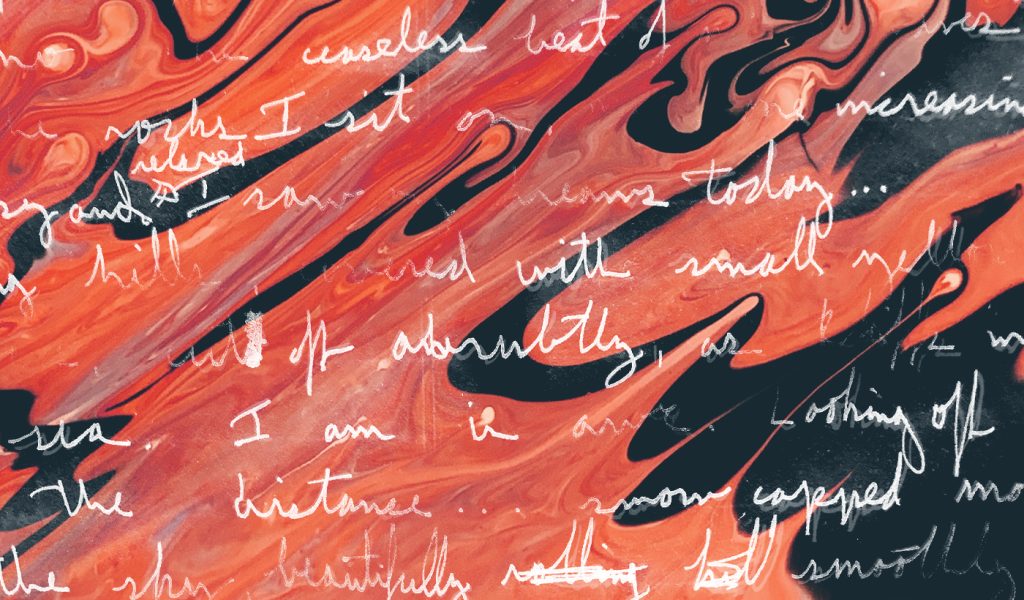How to write a poem
What makes a poem?
Nobody knows.
They just agree:
It isn’t prose.
A poem can be almost anything. It can be an amorphous, scattershot stream of consciousness or a carefully structured narrative with precise rhymes and meter. It can be open to interpretation, or unambiguous and direct. And it can be meant for a wide audience, or just for your own private diary. This versatile verse is the written word’s oldest form of creative expression, and writing poetry is something everyone should try at least once.
Anyone who can write can write a poem, and for the ambitious poets, publish a poetry book. It doesn’t have to take years of study, and you’re only on the hook for the rules you choose to set for yourself. You’re here, so we hope you’re willing to try—and we’ll set you up with some things to consider when you write your poem, guidelines to follow, and ways to get the most out of your foray into the versatile verse.
But before you delve into how to write poetry, let’s get you excited about why.
Benefits of writing poetry
Whoever or whatever you’re writing your poetry for, it is, first and foremost, a deeply rewarding creative exercise. Composing a poem helps you think differently—about your writing, yourself, and the world around you. The freedom of poetry can allow you to wander into new facets of your imagination. On the other hand, the constraints of a particular poetic structure can force you to delve deeper into untapped parts of your writing brain. Either way, anyone used to writing prose can benefit from taking poetry for a spin. A poet strives to make every word impactful, and that’s a skill that translates into every form of writing.
Branch out. Find new words. Form new imagery. Forge new rhymes. You’ll get out as much as you put in—and possibly more.

Types of poems
So, we know a poem can be just about anything. But that doesn’t mean you shouldn’t have some understanding of the type of poem you’re setting out to write.
If you’ve already been exposed to volumes of poetry as a reader, you’re probably familiar with your favorite forms and some of the ins-and-outs of their composition as you start writing. If you’re new to poetry—or haven’t read any since a teacher last assigned you one—it’s worth taking some time to explore a variety of poems, long and short, old and new. Reading can help you learn about the impact of poetry’s words and structure. And going to a local poetry reading can be an ear-opening way to experience another critical aspect of the medium: the interplay of words and their sounds. Take it all in, and discover what speaks to you and sparks your muse.
The big three
As you delve into poetry as a reader, you’ll discover that, broadly speaking, the medium falls into three general forms.
Rhymed verse
This is the most common kind of poetry, and likely what you think of when you think of a poem in the classic sense. From nursery rhymes to limericks to sweeping narrative epics, all examples of rhymed verse follow prescriptive rules about how many syllables are in each line, which syllables are emphasized, and which words rhyme with each other. Composing rhymed verse is a lot like writing a song without the music.
Blank verse
This type of poetry follows syllabic rules (forming the poem’s “meter”) but doesn’t call for any rhymes. Shakespeare often used blank verse written in iambic pentameter to give the spoken words a rhythm and cadence. It’s still a lyrical form of poetry, and presents plenty of technical challenges to the writer, but you won’t have to worry about finding a word that rhymes with “purple.”
Free verse
Free verse a name given to a type of poetry that throws pretty much every rule out the window. Syllable counts, rhymes, even the basic structure of the poem itself are left entirely in the hands of the poet. You can group thoughts—or divide them across lines—entirely as you see fit. One line might contain twenty syllables, while the next might have just one. This can be liberating, and especially useful for stream-of-consciousness writing. Nontraditional poets like e.e. cummings pushed the boundaries of what a poem can be, using creative structures to shape the reader’s experience.
Don’t be intimidated by the rules of rhymed and blank verse. It can take a while to find your groove, but once you get into the swing of things, those rules can help propel your creative process. If you get caught up on something, remember that language is flexible. Tricks like slant rhyming will get you out of some jams, and there’s always this hack for getting around troublesome meter:
Counting syllables out can be fun,
’Til you find yourself over by one.
There’s a time-honored fix
In the bard’s bag of tricks:
An apostrophe gets the job done.

Inspiration and expression
With a poetry form in mind, you’ll next form an idea of what your poem is about (or reverse that order—this is poetry!). Anything you want to express or communicate can come to life as a poem. An observation. A memory. A fantasy. A life story, or a heroic epic, or both. Anything goes.
Just as important as the subject of your poem is how you’ll go about the process of writing it. Poems can, and should, be evocative for the reader—but writing a poem is often more about conveying your own emotion than eliciting a particular response. Take it from William Wordsworth:
“Poetry is the spontaneous overflow of powerful feelings: it takes its origin from emotion recollected in tranquility.”
Others write with a different approach, disappearing into another persona, or examining a subject from a completely externalized point of view. Take it from T.S. Eliot:
“Poetry is not a turning loose of emotion, but an escape from emotion; it is not the expression of personality, but an escape from personality.”
Those are two very good poets, with two very different takes. Like everything in poetry, there’s no singular answer. As Elliot continued:
“…but of course, only those who have personality and emotions know what it means to want to escape from these things.”
Both of these poetry legends obviously found (and connected emotionally) with huge audiences. So here’s the lesson: write for yourself, and go where your own mind takes you. You’ll end up with poetry that’s honest and personal; whether that resonates with other readers will be up to their own personalities and interpretations, and that’s more than okay.
Finding the right headspace to write your best poetry can also mean finding the right physical space and the tools that suit your process. Think about where you do your best writing, and where you find your strongest creative inspiration. It might be a secluded forest glen, or a crowded subway car, or your desk at home. On a notepad, a laptop, or your phone. Write where writing comes naturally to you, using whatever implements you’re most comfortable with.

Painting with words
Writers love poetry because it shines a glorious light on the magic of language itself. When you compose an original poem, words come together and perform a completely new dance for the reader. Employ literary devices like assonance and consonance to give individual words more impact. Evoke deeper meanings with figures of speech (figurative language); simile for direct comparison of two concepts, metaphor for less direct analogies, and synecdoche and metonymy for new (or familiar) ways of describing known concepts. Employ these and other literary devices as you see fit, and trust your instincts.
Don’t be afraid to use resources like a thesaurus. Poetry is all about finding the right words, and even the best poets need help finding them from time to time. OneLook.com has a reverse dictionary that’s one of our favorites. It can help you find not just synonyms but related words and concepts, sorted by parts of speech. If you’ve committed to a form that rhymes, a rhyming dictionary can be a big help, too.
Seek feedback
Sharing your work with others is a great way to hone your craft—and discover how to better capture your own voice on the page. If you intend to put your work out into the world, but have any hesitation about the reaction, start small. Let close friends or family members read your poetry, or share it in the poetry community (online or IRL). You’ll find a receptive audience that either knows where your writing is coming from or can provide help through their own knowledge and experience.
Just start writing
Above all else, the key to writing poetry is this: just start writing. These days, there are a ton of writing resources for aspiring writers. If you can’t quite think of how to start a poem, move past the opening, and start in the middle. If the meter and rhyme are tripping you up, change course and take free verse for a spin. And if you have no idea where to even begin, start small by writing a haiku about whatever’s on your mind to get your creative wheels turning. In fact, we’ll close with one:
Which device is best,
Metaphor or simile?
That’s, like, up to you.
For inspiration, check out our blog to learn how to write a poetry book.

